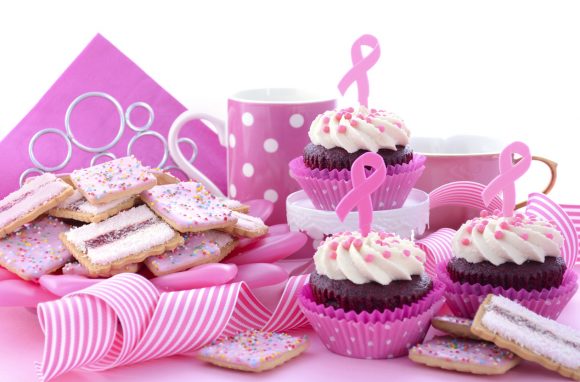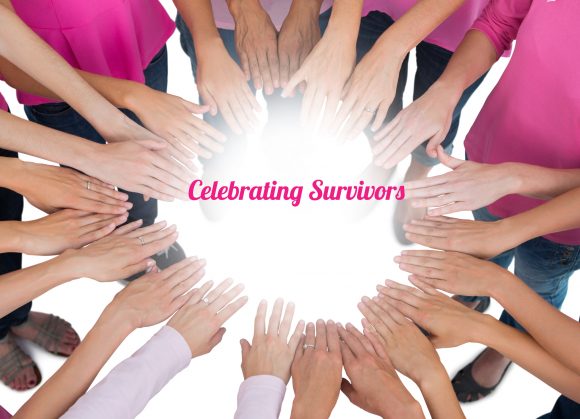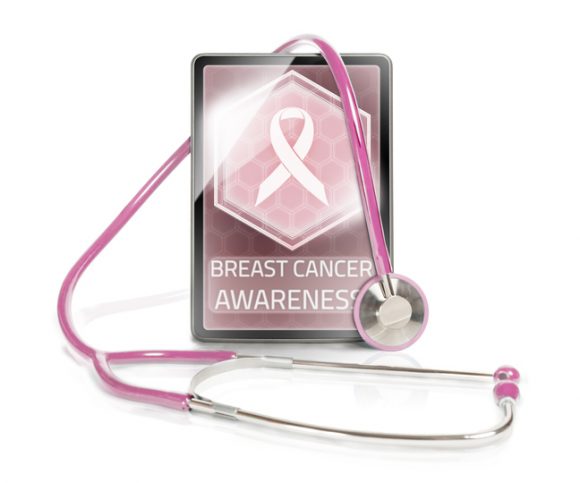Pink power time has arrived. Once again, FLASS announces a pink alert in honor of Breast Cancer Awareness month. Yes, pink October comes with a flurry of falling leaves and pink ribbons. In Orlando, FLASS doctors and staff, families and friends celebrate National Breast Cancer Awareness Month.
Pink ribbon walks, races, baked goods, and fundraisers will be part of the annual crusade for breast cancer awareness, research and advocacy. Thus we dedicate today’s blog in honor of breast cancer survivors and in the memory of those who lost their fight with this disease.
Pink Power Raises Awareness
As in previous years, FLASS hopes you will join us, each in your own way, to help to raise awareness about breast

Here’s An Idea: Host an Event for Pink Ribbon Day charity for breast cancer awareness with a pink morning tea with cupcakes, cookies, coffee and tea.
cancer. As of January 2018, there are more than 3.1 million women with a history of breast cancer in the U.S. This includes women currently being treated and women who have finished treatment.
Important Pink Facts and Statistics
You will see and hear the major statistics concerning breast cancer on many media channels in the coming days of this month.
FLASS also believes in the powerful value of the facts. Therefore we present some of the most informative statistics you need to know:
Pink Fact One: Numbers Count!
More than 3.1 million people in the US, including some who are still in treatment, are alive today in spite of their battle with breast cancer in the United States. Likewise, we are proud that, “a woman’s risk of dying of breast cancer dropped 38 percent between the late 1980s and 2014, translating into 297,300 fewer breast cancer deaths during that time.”
Pink Fact Two: War on Breast Cancer
We are still waging war against fierce odds. In 2018, an estimated 266,120 new cases of invasive breast cancer are

Survivors and Supporters are getting spreading words of hope with their slogan.
expected to be diagnosed in women in the U.S. Likewise, doctors will diagnose 63,960 new cases of non-invasive (in situ) breast cancer.
Pink Fatal Fact Three: Still a Killer
FLASS warns you that breast cancer is still the second leading cause of cancer death in women. Logically, you might want to know what style of cancer kills more women than breast cancer. (We reported on this issue last year, by the way.) You see, unfortunately, here at Florida Lung, Asthma and Sleep Specialists, we still know “Only lung cancer kills more women each year.”
Beyond the Pink Battle: Fact Four
According to the American Cancer Society, by the end of the year, lung cancer will kill approximately 72,160 women in

A Circle of Support for Breast Cancer Survivors. Let us celebrate them.
the US. So, although we dedicate October to breast cancer awareness, let us also remember that cancer invades lungs as well as breasts.
The Pink Diagnosis: Fact Five
For women in the U.S., breast cancer death rates are higher than those for any other cancer, with the exception of lung cancer.
Except for certain types of deadly skin cancer, breast cancer is the most commonly diagnosed cancer among American women.
An Alarming Pink Fact Number Six:
For women under 45, breast cancer is more common in African-American women than white women. Overall, African-American women are more likely to die of breast cancer. For Asian, Hispanic, and Native-American women, the risk of developing and dying from breast cancer is lower.
Risky Pink Fact Six: Heredity- A Risk You
Cannot Change

Breast Cancer Awareness is key to more research and the cure.
Did you know that a woman’s risk of breast cancer nearly doubles if she has a first-degree relative who has been
diagnosed with breast cancer? A “first degree relative is a mother, sister, or daughter.)
- On the one hand, less than 15% of women who get breast cancer have a family member diagnosed with it.
- On the other hand, statistics reveal that about 85% of breast cancers occur in women who have no family history of breast cancer.
These cancers occur due to genetic mutations that happen as a result of the aging process and life in general, rather than inherited mutations.
In our next blog we will explore this concept more deeply. Until then, we thank you for reading our FLASS blog and we are truly grateful for your support of the Breast Cancer Awareness movement.
We are wearing our ribbons; are you wearing yours?

